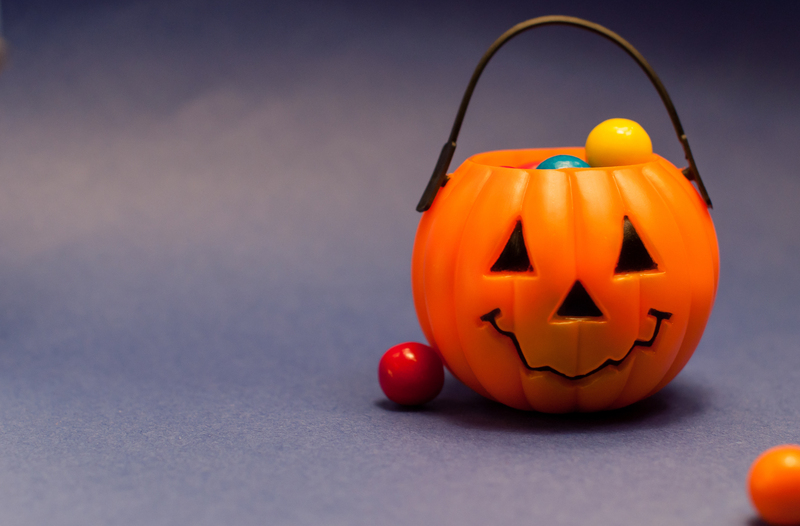Revitalize Your Jewellery with Unique Cleaning Methods
Posted on 30/08/2025
Revitalize Your Jewellery with Unique Cleaning Methods
Jewellery is more than an accessory--it's an expression of personal style, a cherished memento, and often, a substantial investment. But over time, even the most dazzling pieces lose their shine, falling victim to dirt, oil, and environmental factors. Revitalizing your jewellery with unique cleaning methods not only restores its sparkle but can also extend the life and beauty of your favorite pieces.
If you're searching for comprehensive, innovative, and safe techniques to clean your jewellery at home, you've found the ultimate guide. This article uncovers a collection of unparalleled cleaning methods tailored to silver, gold, gemstones, and more--ensuring your treasured items sparkle as brightly as the day you got them.
Why Conventional Jewellery Cleaning Falls Short
Many people rely on commercial cleaners to polish their jewellery, yet these often contain harsh chemicals that can damage delicate pieces. Even popular home remedies, such as toothpaste or baking soda, may prove too abrasive for some metals and gemstones. Relying solely on standard techniques may restore shine in the short term but can lead to long-term wear and tear.
- Harsh Chemicals: Can tarnish or erode soft metals and gems.
- Abrasive Materials: Cause microscopic scratches, reducing shimmer.
- Generic Methods: Don't account for specific material requirements.
So, what's the alternative? Let's explore unique and safe cleaning methods for revitalizing your jewellery.

Assessing Your Jewellery: The First Step to Effective Cleaning
Before you begin, thoroughly assess your jewellery to determine its materials and current condition. Consider:
- Is it gold, silver, platinum, or a base metal?
- Does it feature delicate or soft gemstones (like opal or pearl)?
- Is there significant dirt, tarnishing, or built-up residue?
Identifying these details ensures your chosen cleaning method is safe and effective, preventing accidental damage.
Innovative and Unique Home Jewellery Cleaning Methods
1. Steam Power: Harnessing Household Appliances
If you own a handheld garment steamer, you already have a safe and gentle jewellery cleaner at your disposal.
- Method: Place your jewellery (excluding absorbent gems like pearls or turquoise) on a clean cloth. Hold the steamer 15-20 cm away and allow the steam to envelop the piece for 20-30 seconds. Gently wipe clean with a microfiber cloth.
- Why it works: Steam lifts oils and grime without abrasives or chemicals--perfect for sturdy pieces.
2. The Magic of Ultrasonic Cleaners
Ultrasonic cleaners are now affordable for home use. They use ultrasonic waves to dislodge dirt and debris even from intricate crevices.
- Method: Fill the cleaner with water (add a drop of mild dish soap for extra cleaning) and submerge your jewellery. Run for 2-5 minutes and rinse.
- Cautions: Avoid using ultrasonic cleaners for pearls, emeralds, opals, or any treated stones as vibrations may cause damage.
3. Deep Cleaning with Effervescent Tablets
Alka-Seltzer or denture cleaning tablets aren't just for health--they can revitalize your jewellery as well.
- Method: Dissolve one tablet in a glass of warm water. Drop in your jewellery and let it fizz for 2-5 minutes. Remove, rinse, and dry thoroughly.
- When to use: Ideal for hardy items such as gold bands or diamond rings.
4. Natural Polish Using Banana Peel
For those who prefer all-natural cleaning techniques, banana peel can be surprisingly effective.
- Method: Blitz a banana peel with a few drops of water in a blender. Rub the paste onto your jewellery using a soft cloth, then rinse and buff to a shine.
- Why: Enzymes in the peel act as gentle polishers, lifting tarnish safely from metal surfaces.
5. Silver Rescue with Aluminum Foil Chemistry
This classic science experiment remains one of the most effective home solutions for revitalizing silver jewellery:
- Method: Line a bowl with aluminum foil, add one tablespoon baking soda and hot water. Place the silver jewellery on the foil, ensuring contact. In 3-5 minutes, tarnish lifts onto the foil. Rinse and dry thoroughly.
- Cautions: Best for solid silver. Avoid with glued settings or delicate inlays.
6. Oxygen-Based Cleaners for Gemstones
Effervescent oxygen-based cleaners (like OxiClean, but NOT regular bleach) can safely clean many hard gems.
- Method: Mix a tablespoon of oxygen cleaner with warm water. Soak jewellery for 5-10 minutes, then rinse.
- Note: Confirm durability of your gem type with your jeweller before proceeding.
Gentle Solutions for Delicate Pieces
Some jewellery demands special care--particularly items containing pearls, opals, or antique pieces. Here's how to safely revitalize delicate jewellery:
1. Pearl and Opal Care
- Method: Use a soft, lint-free cloth slightly dampened with water. For stubborn grime, add a drop of baby shampoo.
- Caution: Never submerge pearls or opals. Moisture can weaken threads and cloud stones.
2. Vintage and Costume Jewellery
- Method: Wipe gently with a lightly dampened microfiber cloth. Avoid all chemicals, and never soak in water.
- Tip: Use a soft baby toothbrush for intricate areas, working meticulously to avoid loosening any glue or enamel.
Professional-Grade Techniques - At Home!
If you want to go the extra mile, these advanced approaches help restore your jewellery to showroom brilliance:
1. Ionic Cleaners
- How it works: Ionic cleaners use a gentle electrical current to remove tarnish from precious metals. They're suitable for gold, silver, and platinum.
- Method: Follow the manufacturer's instructions, always using the recommended cleaning solution.
- Caution: Avoid with porous stones or antique pieces.
2. Jewellers' Cloths and Pastes
- Polishing Cloths: These cloths are embedded with non-abrasive cleaning agents. Simply rub your jewellery to remove tarnish and restore shine.
- Polishing Pastes: Specialized pastes remove heavy tarnish but should be tested on a small area before full use. Use a soft cloth or cotton swab for application.
Maintaining Jewellery After Cleaning
Now that your gems are gleaming, it's crucial to maintain their luster with some simple post-cleaning practices:
- Store jewellery in airtight pouches or anti-tarnish boxes.
- Wipe after each wear to remove oils and sweat.
- Avoid exposure to perfumes, lotions, and harsh chemicals.
- Rotate pieces to reduce wear on favorites.
Common Mistakes and How to Avoid Them
Preserving your jewellery's value and appeal means sidestepping these pitfalls:
- Avoid excessive scrubbing--especially with brushes or abrasive pastes.
- Never use bleach or ammonia on any jewellery.
- Don't soak glued-in stones, which can loosen settings and cause stones to fall out.
- Be gentle with chains and fragile clasps to prevent breakage.
When to Seek Professional Cleaning
Certain items should always be entrusted to a professional for cleaning:
- Heavily soiled, antique, or complex pieces with delicate settings
- Jewellery with valuable or rare gemstones
- Uncertain of material or construction
A professional jeweller can use ultrasonic technology, expert hand polishing, or steaming machines that are safe for their specific item type.
Eco-Friendly Jewellery Cleaning Ideas
For those aiming to minimize environmental impact, a few green cleaning methods can safely restore shine:
- Club Soda: Soak gemstones in club soda to lift grime without chemicals.
- White Vinegar (for silver): Dip a soft cloth in vinegar and polish gently--never soak jewellery with stones or pearls.
- Cornstarch Paste: Mix cornstarch with water to form a paste, apply to jewellery, let dry, then buff gently with a soft cloth.

FAQs About Unique Jewellery Cleaning Methods
How often should I clean my jewellery?
Routine cleaning every 1-2 weeks for frequently worn items is ideal. Deep cleaning can be done every few months, depending on wear and exposure.
What household items should I avoid using on jewellery?
Avoid toothpaste, baking soda (for delicate pieces), vinegar (on gemstones), and anything containing bleach or chlorine. These can all cause irreparable damage.
Can I use these methods for watches?
Most watches require special care. Remove leather bands and never submerge mechanical or designer watches. Use a lightly dampened cloth only.
Conclusion: Revitalize Your Jewellery and Keep the Sparkle Alive
Your rings, necklaces, and bracelets are more than adornments--they tell your unique story. With these unique cleaning methods to revitalize your jewellery, you can safely, affordably, and effectively restore every piece to its former brilliance. Always assess your jewellery's components and select the most appropriate cleaning technique. With regular cleaning and proper storage, your cherished pieces will glimmer for years to come.
Remember: When in doubt, consult a professional jeweller to keep your collection radiant and protected. By embracing innovative yet gentle cleaning routines, your jewellery will always shine at its brightest.




